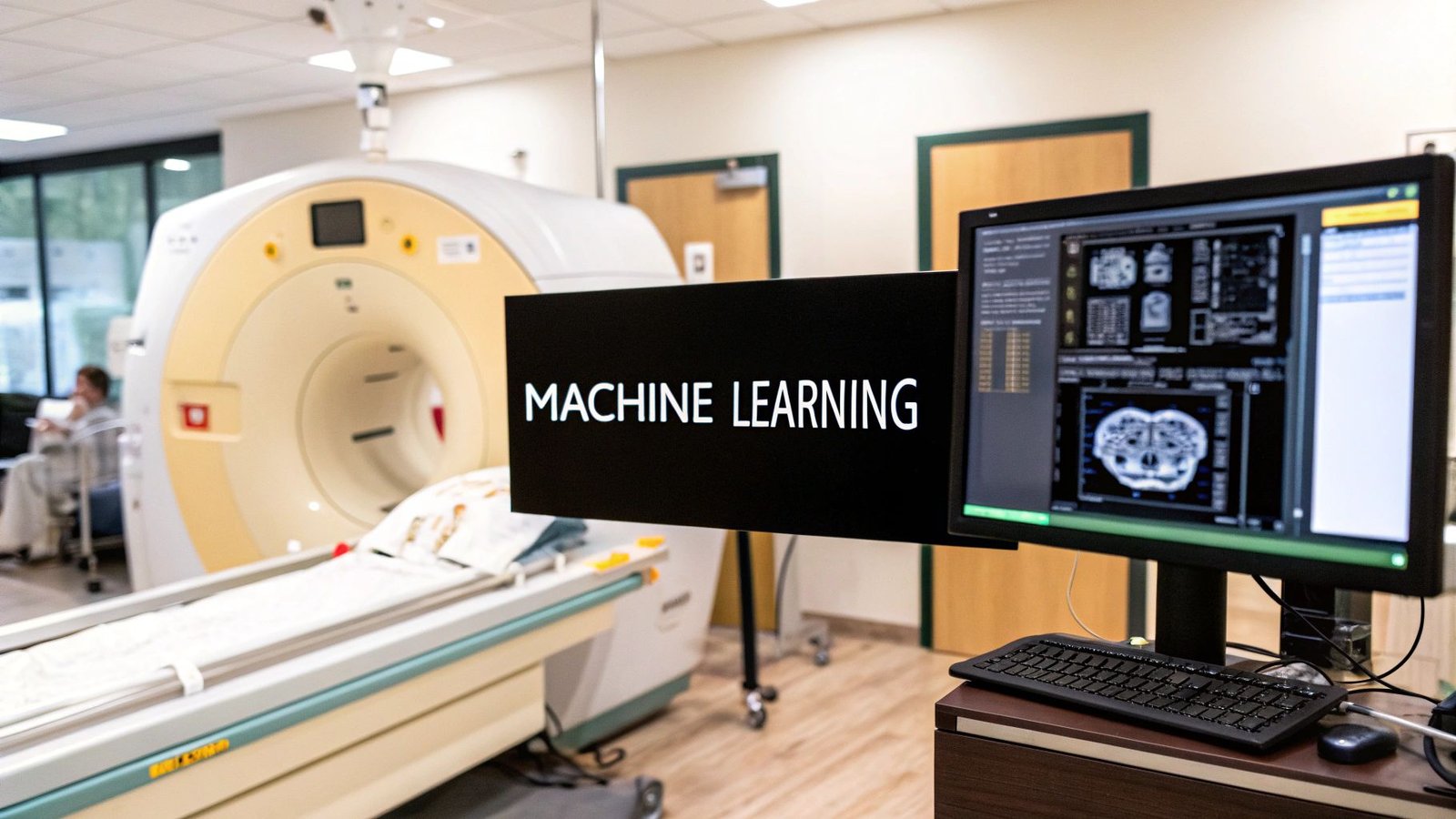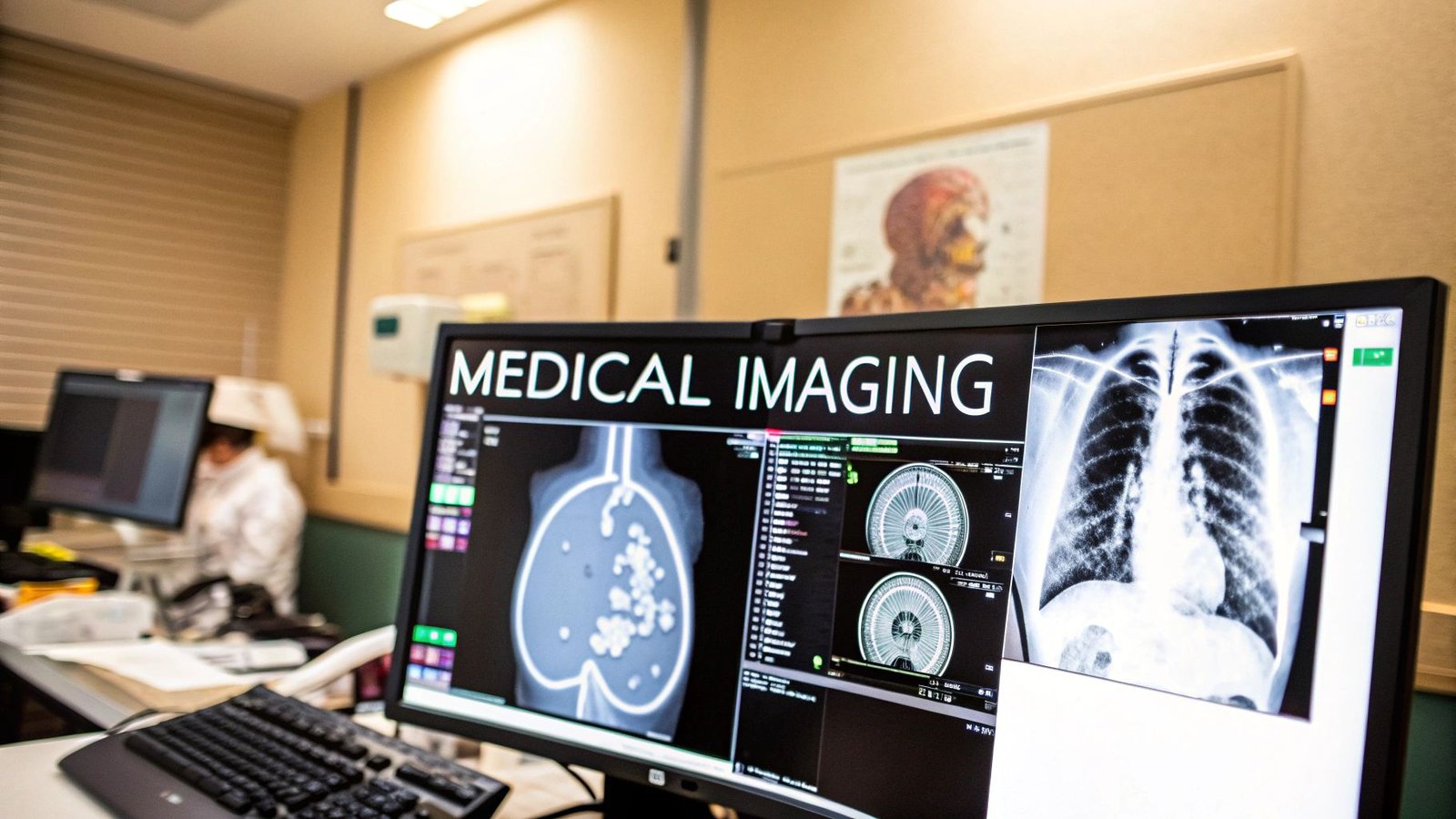The Evolving Landscape of Medical Imaging
Medical imaging stands at a fascinating juncture. We've journeyed from the simplicity of X-rays to the complexity of 4D visualizations, unveiling the human body in remarkable detail. This evolution is reshaping patient care, placing imaging at the heart of modern healthcare. Early disease detection is now a reality, alongside minimally invasive procedures guided by incredible precision.
Advancements in Imaging Technology
These advancements are propelled by technological innovation, clinical needs, and economic factors. Consider the progression from traditional X-rays, providing a 2D snapshot, to MRI (Magnetic Resonance Imaging) and CT scans (Computed Tomography), which offer detailed cross-sectional images. The emergence of hybrid imaging, such as PET/MRI (Positron Emission Tomography/Magnetic Resonance Imaging), combines the strengths of different modalities to present a comprehensive view of both structure and function. This convergence of technologies facilitates a more complete understanding of the body’s intricate mechanisms.
The Role of AI and Big Data
Further accelerating this progress is the integration of Artificial Intelligence (AI) and big data. AI algorithms can analyze vast medical image datasets, identifying subtle patterns and anomalies that might be missed by the human eye. This means AI can assist in early diagnosis, personalize treatments, and even predict patient outcomes. To inspire continued progress in medical imaging, fostering creativity is key. Check out this resource on sparking creativity.
The global medical imaging market is experiencing substantial growth because of these advancements. In 2024, the market was valued at approximately USD 41.6 billion, and it is projected to grow at a CAGR of 4.95% from 2025 to 2030. This growth is driven by factors like the rising prevalence of chronic diseases, the increasing demand for early diagnosis, and the ongoing integration of AI. The expanding geriatric population, which is anticipated to double by 2050, will further fuel the need for medical imaging services. More detailed statistics are available here.
The Impact on Patient Care
Ultimately, these advancements yield tangible benefits for patients. Faster and more accurate diagnoses result in quicker treatment interventions, ultimately leading to improved outcomes. Minimally invasive procedures, guided by advanced imaging, reduce both recovery times and the risk of complications. These improvements signify a substantial shift in how we approach diagnosis and treatment.
AI Revolution: Redefining Diagnostic Possibilities
Artificial intelligence (AI) is rapidly changing the landscape of medical imaging. Machine learning algorithms are now capable of detecting subtle disease patterns often missed by the human eye, significantly enhancing diagnostic capabilities. Deep learning models, trained on millions of images, are becoming increasingly accurate in identifying early-stage cancers and predicting patient responses to treatment. This allows for more effective and timely interventions, ultimately leading to better patient outcomes.
AI-Powered Diagnostics: Enhanced Accuracy and Efficiency
A key benefit of AI in medical imaging is its ability to improve diagnostic accuracy. By analyzing vast datasets, AI algorithms can identify subtle anomalies and patterns that might be overlooked by human radiologists. This is especially impactful in the early detection of cancers, where a timely diagnosis is crucial for successful treatment. AI can also reduce diagnostic errors across various imaging modalities, leading to more reliable and consistent results.
This ultimately translates to improved patient outcomes and a higher standard of care. Improved accuracy and reduced diagnostic errors are key benefits driving the adoption of AI in radiology.
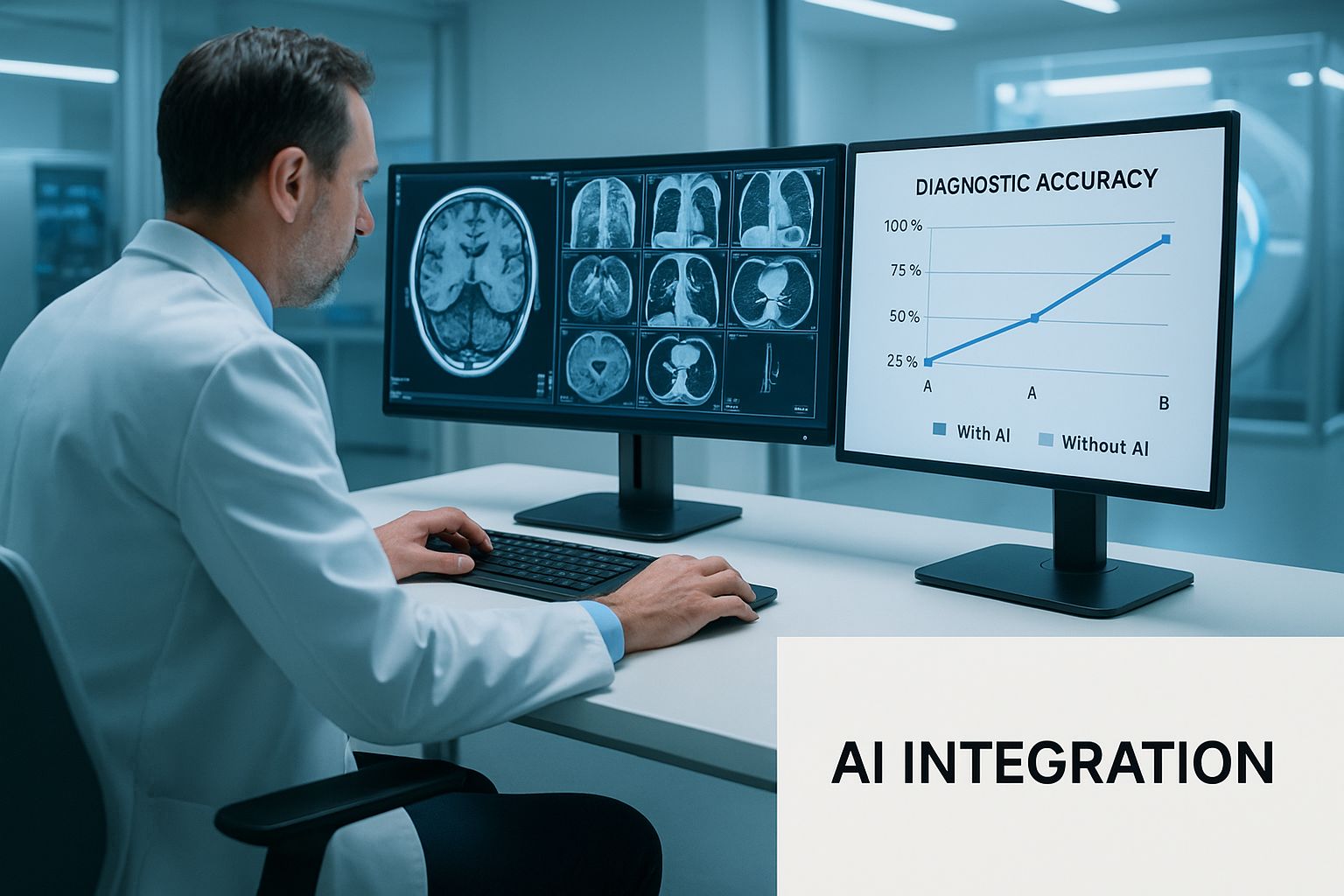
This infographic depicts a futuristic medical lab where a radiologist reviews scans with the assistance of AI. The seamless integration of AI into the diagnostic workflow highlights its growing importance in modern medical practice. These advancements are not just theoretical; they are actively transforming healthcare delivery in leading institutions worldwide.
Transforming Workflows and Empowering Radiologists
Beyond accuracy, AI is transforming radiology workflows. Real-world implementations of AI-powered tools have significantly reduced reporting times, sometimes from days to just minutes. This increased efficiency allows radiologists to focus on more complex cases and dedicate more time to patient interaction. AI provides radiologists with new tools and insights, empowering them to make more informed decisions.
This collaborative approach, combining the expertise of humans with the power of AI, maximizes the potential of both, leading to better patient care. Reduced reporting times and enhanced decision-making are two key benefits of this collaboration.
To illustrate the applications and challenges of AI in various imaging modalities, consider the following table:
AI Applications in Different Medical Imaging Modalities
| Imaging Modality | AI Application | Clinical Benefits | Implementation Challenges |
|---|---|---|---|
| X-ray | Automated bone fracture detection | Faster diagnosis, reduced workload for radiologists | Variability in image quality, need for large training datasets |
| CT | Organ segmentation and tumor detection | Improved accuracy and speed of diagnosis, personalized treatment planning | High computational cost, data privacy concerns |
| MRI | Brain lesion detection and classification | Early detection of neurological disorders, improved monitoring of disease progression | Complex image analysis, need for standardized protocols |
| Ultrasound | Fetal anomaly screening | Non-invasive and real-time diagnosis, reduced need for invasive procedures | Operator dependency, image quality limitations |
This table summarizes the current state of AI applications in medical imaging across different modalities. It highlights the specific clinical benefits while also acknowledging the challenges that need to be addressed for successful implementation.
The integration of AI and personalized medicine is transforming the medical imaging landscape. The global Medical Imaging Devices market, estimated at USD 43.7 billion in 2024, is projected to grow at a CAGR of 5.7% between 2024 and 2030. Find more detailed statistics here. This growth is driven by several factors, including technological advancements, increased investment in healthcare infrastructure, and a growing demand for advanced imaging technologies like CT and MRI scans. These advancements offer improvements in diagnostic accuracy, cost reduction, and better patient outcomes. The aging populations in countries like Japan and Italy further contribute to this increased demand for medical imaging services.
Personalized Imaging: Tailoring Diagnosis To You
The age of generalized medical imaging is fading. Medical imaging is evolving into a personalized experience, going beyond simply capturing anatomical images to incorporating your unique genetic makeup and disease characteristics. This evolution toward individualized care is fueled by advancements in fields like radiomics and radiogenomics.
Radiomics: Unlocking Hidden Insights
Radiomics involves extracting vast quantities of data from medical images. Imagine a standard image showing a tumor. Radiomics analyzes thousands of features within that image, uncovering subtle details invisible to the naked eye. These details could include the tumor's texture, shape, and metabolic activity, creating a unique "fingerprint" of the disease and offering a far more in-depth understanding than traditional visual assessment. This data provides powerful insights for predicting disease behavior and response to treatment.
Radiogenomics: Connecting Genes and Images
Radiogenomics takes personalization even further by linking these imaging features to your genetic profile. Certain genetic markers might predispose you to a specific cancer type. Radiogenomics helps identify how these genetic predispositions manifest in your medical images. This integration of AI is transforming various aspects of medical imaging, similar to how AI is reshaping scientific research, as discussed in this AI for research papers resource. The result is a more accurate prediction of which treatments will be most effective for your individual case.
Real-World Impact: Changing Treatment Decisions
Personalized imaging is already making a tangible difference in patient care. Consider a patient with a seemingly uniform tumor on a standard scan. Radiomics might reveal subtle variations within the tumor, highlighting areas of more aggressive growth. By combining this with the patient's genetic information through radiogenomics, clinicians can predict which targeted therapies will be most effective against these aggressive areas. This personalized approach drastically changes treatment decisions, moving away from a "one-size-fits-all" model towards targeted, individual strategies. This is not just a theoretical advancement, but a practical transformation occurring in leading healthcare institutions.
Implementing Personalized Imaging: Overcoming Challenges
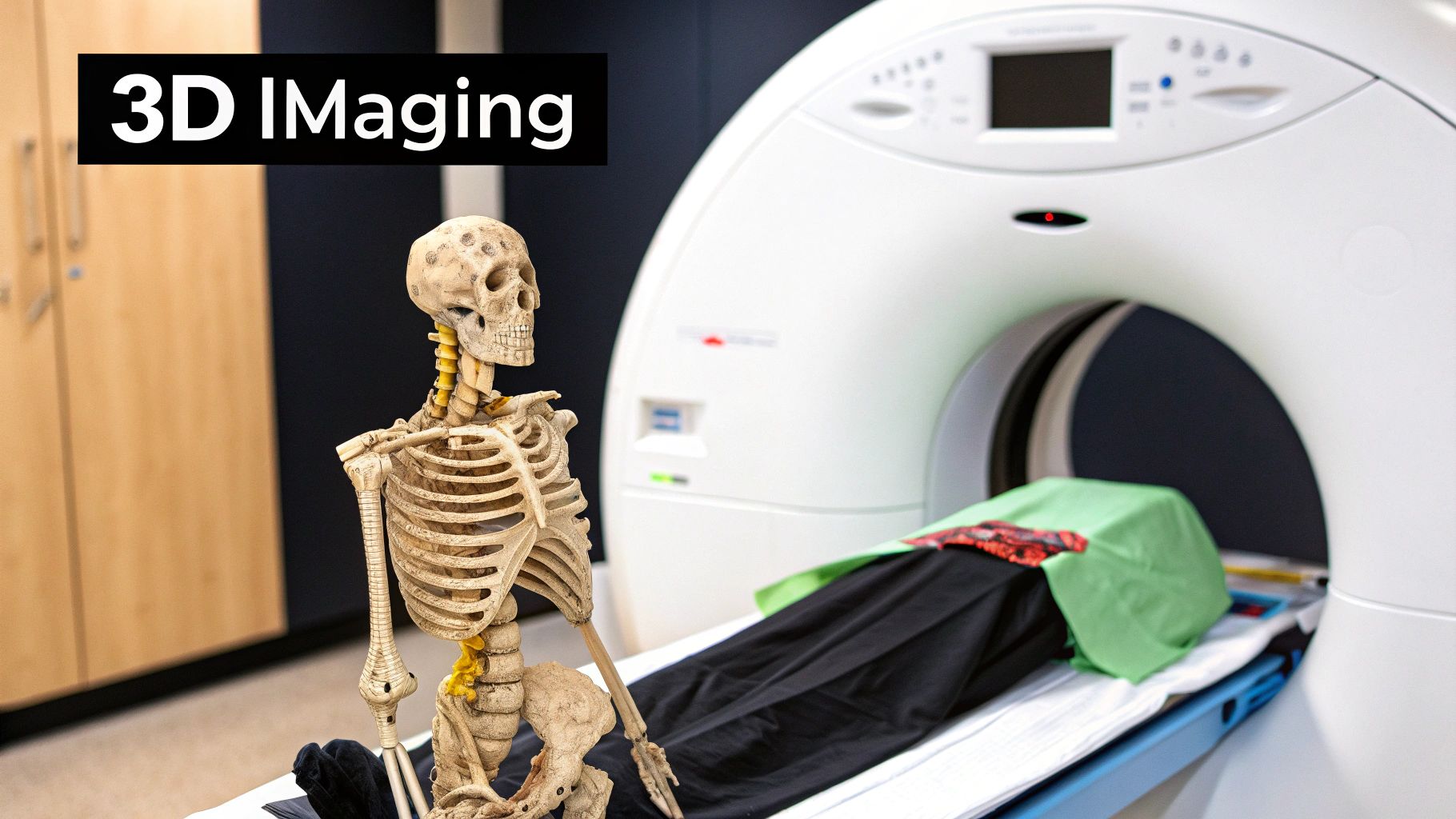
While the potential of personalized imaging is significant, implementing these approaches has its hurdles. Integrating data from diverse sources, like imaging systems, genetic databases, and electronic health records, requires considerable investment in infrastructure and specialized knowledge. Training multidisciplinary teams to interpret and apply this complex information is also critical. Leading medical centers are actively tackling these challenges, developing new workflows and training programs to bring personalized medicine into mainstream practice, ensuring patients receive truly individualized care.
The Economic Impact of Imaging Innovation
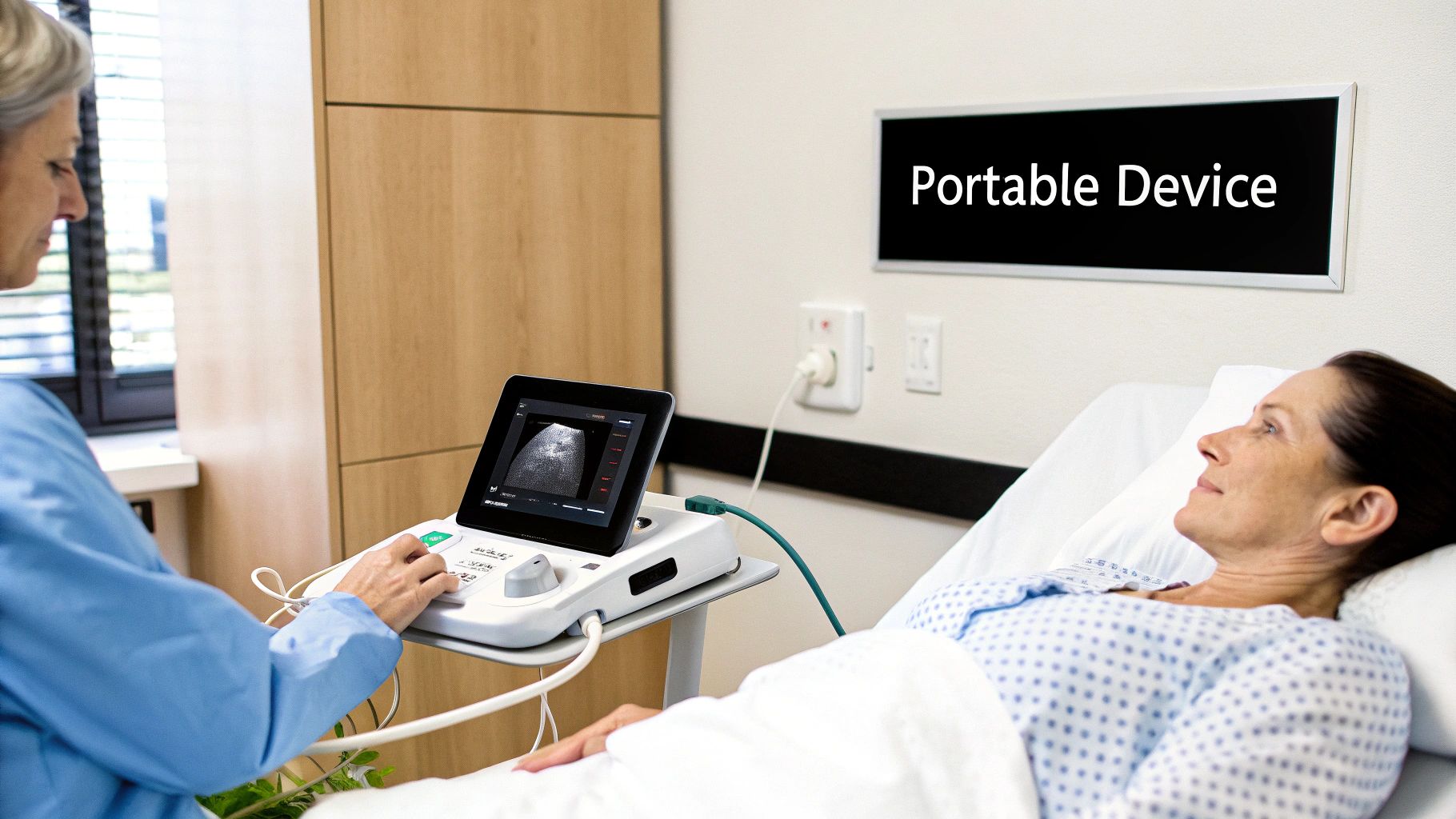
The future of medical imaging goes beyond clinical advancements; it's significantly impacting the economy. Venture capital investments in AI imaging startups are increasing, and established healthcare systems are investing in technological upgrades. This financial activity highlights the growing importance of imaging in modern healthcare.
Early Detection and Cost Reduction
A primary economic benefit of advanced imaging is early disease detection. Early diagnosis for conditions like cancer and neurodegenerative diseases can significantly lower treatment costs. Treating early-stage cancer, for instance, is generally less expensive and more effective than treating later stages requiring more complex and costly interventions. This cost-effectiveness is a major factor driving investment in innovative imaging technologies.
Global Growth and Healthcare Equity
The economic effects of imaging innovation vary across the globe. Some regions are seeing rapid growth in the medical imaging market, fueled by investment, technological advancements, and growing healthcare needs. Other regions, however, are lagging, leading to concerns about global healthcare equity. This disparity underscores the importance of policies and programs that promote access to advanced imaging technologies worldwide. Bridging this gap is essential to ensure everyone benefits from advancements in medical imaging.
The diagnostic imaging devices market is experiencing substantial growth due to factors like the increasing prevalence of chronic diseases and continuous technological advancements. By 2025, this market is projected to generate approximately USD 49.97 billion in revenue. The overall medical imaging market, valued at USD 63.4 billion in 2024, is forecast to reach USD 82.6 billion by 2029, with a CAGR of 5.50%. This growth reflects the increasing demand for early disease diagnosis and management, especially with the growing global geriatric population. AI technologies are improving accuracy and reducing costs, making medical imaging more accessible and effective. Learn more here.
The following table offers a more detailed look at projected growth across different market segments:
Global Medical Imaging Market Growth Projections
| Market Segment | Current Value (USD Billion) | Projected Value (USD Billion) | CAGR (%) | Key Growth Drivers |
|---|---|---|---|---|
| Diagnostic Imaging Devices | 45 (estimated) | 49.97 | – | Increasing prevalence of chronic diseases, technological advancements |
| Overall Medical Imaging Market | 63.4 | 82.6 | 5.50 | Rising demand for early diagnosis and management, aging population, AI integration |
This table highlights the significant growth expected in both the diagnostic imaging devices segment and the broader medical imaging market, driven by a combination of disease prevalence, technological progress, and demographic shifts.
Reimbursement Policies and Innovative Payment Models
Reimbursement policies are key to the adoption of new imaging technologies. Favorable policies can encourage healthcare providers to invest in and implement these technologies, promoting wider adoption. Conversely, restrictive policies can hinder access, potentially limiting patients' access to crucial diagnostic tools.
Innovative payment models are addressing these challenges by making advanced imaging more affordable and accessible. Value-based care models, for example, reward healthcare providers for positive patient outcomes, not the volume of services. This approach encourages the use of technologies that improve diagnostic accuracy and treatment efficacy, ultimately benefiting patients and the healthcare system.
Return on Investment in Healthcare Systems
Healthcare systems are increasingly recognizing the return on investment (ROI) of implementing advanced imaging technologies. While upfront costs can be high, the long-term benefits—reduced treatment costs and better patient outcomes—often outweigh the initial investment. Case studies demonstrate how these technologies lead to cost savings, improved efficiency, and better quality of care, making a strong argument for continued investment in the future of medical imaging.
Breakthrough Technologies Reshaping Patient Care
This section explores the groundbreaking technologies set to transform medical imaging. These innovations are moving from research into clinical practice, promising significant advancements in patient care.
Photon-Counting CT: Enhanced Clarity and Reduced Radiation
Photon-counting CT (computed tomography) represents a major leap forward in medical imaging. Unlike conventional CT scanners, which measure the total energy of incoming X-rays, photon-counting CT detectors register each individual X-ray photon and its energy level. This results in significantly clearer images, particularly when visualizing small structures and subtle differences in tissue composition.
For example, this technology can better differentiate between materials like calcium and iodine, crucial for characterizing various lesions. Furthermore, photon-counting CT offers the potential to drastically reduce radiation exposure.
By precisely measuring X-ray energy, these scanners create high-quality images with far fewer X-rays, approaching near-background radiation levels. This is particularly beneficial for children, who are more susceptible to the long-term effects of radiation. This technology offers a powerful combination of improved diagnostics and enhanced patient safety.
Ultra-High-Field MRI: Exploring the Brain at the Cellular Level
Ultra-high-field MRI (magnetic resonance imaging) pushes the limits of neuroimaging. Using significantly stronger magnetic fields than conventional MRI systems, ultra-high-field MRI provides unmatched resolution and sensitivity. This allows for detailed visualizations of brain structures at the cellular level, offering new insights into how the brain works.
This technology is changing our understanding of complex neurological conditions like Alzheimer's and Parkinson's disease. By revealing subtle alterations in brain activity and structure, it facilitates earlier diagnosis and interventions, potentially slowing disease progression. The information gained from ultra-high-field MRI is leading to more effective treatments and better outcomes for neurological patients.
Portable Ultrasound: Expanding Access to Advanced Diagnostics
Miniaturized, portable ultrasound devices are broadening access to sophisticated diagnostic tools. Easily transportable to remote locations, disaster areas, and even patient bedsides, these devices provide point-of-care diagnostics where traditional imaging equipment is unavailable.
In emergencies, portable ultrasound allows for quick assessments of internal injuries, guiding immediate treatment decisions and improving patient outcomes in critical situations. Moreover, these devices bring advanced diagnostics to underserved communities in developing countries, promoting healthcare equity by increasing access to essential medical technologies. This wider availability of advanced imaging is vital for improving global healthcare outcomes.
Augmented Reality: Transforming Surgical Visualization
Augmented reality (AR) is revolutionizing surgical visualization and precision by merging the digital and physical realms within the operating room. AR systems project 3D images from CT or MRI scans directly onto the patient during surgical procedures. This allows surgeons to effectively "see" inside the patient, visualizing underlying anatomical structures, tumors, and blood vessels in real-time.
This technology enhances surgical accuracy, reduces invasiveness, and minimizes the risk of complications. For example, during tumor removal, AR helps surgeons avoid critical structures like nerves and blood vessels, resulting in safer and more effective operations. This seamless integration of medical imaging with surgical visualization marks a new era of precision surgery.
These breakthrough technologies represent the exciting future of medical imaging and its capacity to reshape patient care across various medical specialties. The continued development and implementation of these technologies promise improved diagnoses, more effective treatments, and better health outcomes for patients worldwide.
Navigating the Ethical Frontiers of Imaging
The rapid advancement of medical imaging presents us with a new set of ethical considerations. As our understanding of the human body deepens through increasingly sophisticated technologies, so too must our understanding of the complex ethical dilemmas these technologies create. These considerations encompass not only patient care, but also data privacy and access to these powerful tools.
Balancing Risks and Benefits: The Radiation Question
One key ethical concern revolves around radiation exposure. While imaging techniques like CT scans offer invaluable diagnostic information, they also expose patients to ionizing radiation. Healthcare providers must constantly evaluate the diagnostic benefits against the potential risks, particularly for vulnerable groups such as children.
Optimizing scanning protocols to minimize radiation dose without compromising image quality is a critical area of focus. This careful balancing act requires thoughtful consideration and adherence to evolving safety guidelines.
Protecting Patient Data in the Age of AI
The growing use of AI in medical imaging raises significant privacy concerns. AI systems often require large amounts of patient data, including medical images, to operate effectively. Safeguarding this sensitive information is paramount.
Leading institutions are now implementing strict data anonymization and encryption protocols to protect patient privacy while still enabling advancements in AI-powered diagnostics. This commitment to data security is vital for building and maintaining patient trust and ensuring responsible use of these technologies.
The Dilemma of Incidental Findings
Another ethical challenge stems from incidental findings: the discovery of unexpected medical issues unrelated to the initial reason for the scan. These findings can vary from benign cysts to serious, life-threatening conditions.
Such discoveries can create both psychological and financial burdens for patients. An incidental finding may necessitate further testing and procedures, leading to increased anxiety and expense. Furthermore, the psychological impact of an unforeseen diagnosis can be substantial. Healthcare professionals must approach these delicate situations with sensitivity and empathy, providing patients with clear, understandable information and compassionate support.
Ensuring Equitable Access to Advanced Imaging
The increasing sophistication and associated costs of advanced imaging technologies can unfortunately widen existing healthcare disparities. Ensuring equitable access to these important diagnostic tools is a critical ethical imperative.
Many organizations are striving to address this challenge through programs designed to improve access in underserved communities. Mobile imaging units and tele-radiology programs, for example, can extend advanced diagnostic capabilities to remote or resource-limited areas. These initiatives are essential for promoting healthcare equity and ensuring that the benefits of progress in medical imaging reach all who need them.
Addressing these ethical considerations is crucial for the responsible development and use of medical imaging technologies. By carefully navigating these complex issues, we can ensure these powerful tools are utilized to maximize patient benefit while upholding the highest ethical standards.
Want to explore how AI can further optimize your medical imaging solutions? PYCAD offers expertise in integrating AI into medical imaging, from data handling and model training to deployment. Learn more about how PYCAD can help you.

